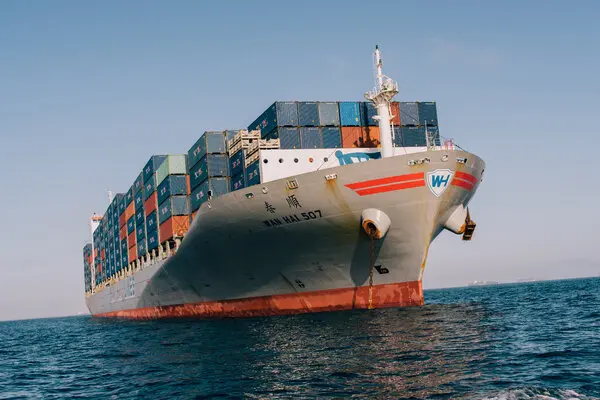The Ultimate Guide to “Big Fuel Container NYT”: Understanding Its Importance and Applications

Introduction
Fuel containers play a crucial role in various industries, from transportation to agriculture. Among these, the concept of the “big fuel container nyt” has garnered significant attention, particularly as highlighted by a New York Times (NYT) article. This guide delves into the intricacies of big fuel containers, exploring their importance, applications, and future trends.
Understanding Fuel Containers
Fuel containers are essential for storing and transporting fuel safely and efficiently. These containers come in various shapes, sizes, and materials, each designed to meet specific industry requirements. From small portable containers to massive storage tanks, the evolution of fuel containers reflects the growing demands of industries that rely on fuel as a critical resource.
The Concept of a “Big Fuel Container”
When we talk about a “big” fuel container, we refer to storage solutions with large capacities, often ranging from thousands to millions of liters. These containers are typically used in industries where large volumes of fuel are required, such as in the oil and gas sector, large-scale agriculture, and logistics. The capacity and durability of these containers make them indispensable in scenarios where fuel needs to be stored for long periods or transported over vast distances.
The Role of Big Fuel Containers in Industry
Importance in the Oil and Gas Sector
In the oil and gas industry, big fuel containers are vital for storing crude oil, refined products, and other petrochemicals. These containers are designed to withstand extreme conditions, ensuring that the fuel remains safe and uncontaminated. They are also crucial in managing the supply chain, enabling companies to store large quantities of fuel near production sites or distribution centers.
Applications in Agriculture and Construction
Agriculture and construction are other sectors where big fuel containers are commonly used. In agriculture, these containers store diesel and other fuels needed to power tractors, harvesters, and irrigation systems. In construction, they provide a reliable fuel supply for heavy machinery and equipment, ensuring uninterrupted operations on large projects.
Usage in Transportation and Logistics
The transportation and logistics industries also rely heavily on big fuel containers. Whether it’s fueling fleets of trucks or powering ships and trains, these containers ensure that the necessary fuel is always available. They are particularly important in remote areas where fuel stations are scarce, allowing companies to maintain efficiency and avoid costly delays.
Material and Design of Big Fuel Containers
The materials used to construct big fuel containers vary depending on their intended use. Common materials include steel, aluminum, and high-density plastics. Steel containers are known for their strength and durability, making them ideal for long-term storage. Aluminum is lighter and resistant to corrosion, making it suitable for transportation. Plastic containers are often used for smaller capacities due to their flexibility and cost-effectiveness.
Design is another critical factor, with safety and efficiency being top priorities. Innovations in design have led to containers that are easier to handle, more resistant to leaks, and better suited to specific environmental conditions. For example, double-walled containers provide an added layer of protection against spills, while advanced coatings prevent corrosion and extend the container’s lifespan.
Safety Measures and Regulations
Handling big fuel containers requires adherence to strict safety protocols to prevent accidents and environmental damage. These protocols include proper labeling, regular inspections, and the use of protective equipment. Additionally, government regulations play a significant role in ensuring that fuel containers meet safety standards. Compliance with these regulations is essential for companies to avoid fines and legal issues.
Industry standards, such as those set by the American big fuel container nyt Petroleum Institute (API) or the International Organization for Standardization (ISO), also provide guidelines for the safe design, construction, and use of fuel containers. These standards ensure that containers can withstand the pressures and stresses they may encounter during use.
Environmental Impact
Big fuel containers, if not managed properly, can pose significant environmental risks. Fuel spills and leaks can lead to soil and water contamination, harming local ecosystems and wildlife. To mitigate these risks, companies must implement robust spill prevention and response plans. This includes regular maintenance of containers, proper storage practices, and immediate action in the event of a spill.
Sustainability is also a growing concern in the industry. Companies are exploring ways to reduce their environmental footprint by adopting greener technologies and practices. This includes using materials that are easier to recycle, implementing energy-efficient production processes, and investing in renewable energy sources.
Case Study: Big Fuel Container in the New York Times
The New York Times has covered various aspects of big fuel containers, highlighting their importance in the global energy landscape. One notable article discussed the challenges and opportunities associated with the use of these containers in different industries. The article emphasized the need for innovation and regulatory compliance, drawing attention to the evolving nature of fuel storage and transportation.
The public and industry reactions to the article were mixed, with some praising the focus on safety and sustainability, while others expressed concerns about the costs and logistical challenges. The discussion sparked by the NYT article underscores the complex dynamics at play in the fuel container industry.
Challenges and Solutions
Managing big fuel containers comes with its own set of challenges. These include the risk of leaks, the need for regular maintenance, and the logistical difficulties of transporting large containers. However, technological advancements are helping to address these challenges. For example, the use of sensors and monitoring systems allows companies to detect and respond to issues in real time. Additionally, innovations in container design are making them more robust and easier to manage.
Comparison of Big Fuel Containers with Smaller Containers
Big fuel containers offer several advantages over smaller ones, including greater storage capacity and cost-effectiveness. However, they also come with higher upfront costs and more complex handling requirements. Smaller containers, on the other hand, are more flexible and easier to transport, making them ideal for short-term storage or use in remote locations.
Industry preferences often depend on the specific needs of the operation. For example, large-scale industrial projects may require the use of big fuel containers, while smaller operations may opt for smaller, more manageable containers.
The Future of Big Fuel Containers
The future of big fuel containers is likely to be shaped by technological advancements and the growing emphasis on sustainability. Innovations such as smart containers equipped with IoT devices are already changing the way fuel is stored and managed. These containers can monitor fuel levels, detect leaks, and even predict maintenance needs, all in real-time.
The rise of alternative energy sources, such as biofuels and hydrogen, may also impact the design and use of fuel containers. As these new fuels become more prevalent, containers will need to be adapted to handle different types of fuel safely and efficiently.
Choosing the Right Big Fuel Container
Selecting the right big fuel container depends on several factors, including the type of fuel being stored, the storage duration, and the environmental conditions. Companies should also consider the regulatory requirements in their region and the specific needs of their operation.
Expert advice can be invaluable in making the right choice. Professionals can help assess the risks and benefits of different containers, recommend the best options for specific applications, and ensure that the selected container meets all safety and regulatory standards.
Impact on Global Supply Chains
Big fuel containers play a critical role in global supply chains, particularly in industries that rely on fuel to power their operations. These containers enable companies to store and transport large quantities of fuel, ensuring that they can meet demand even in remote locations. The ability to move fuel efficiently and safely is essential for maintaining the flow of goods and services in the global economy.
International trade also benefits from the use of big fuel containers, as they allow for the bulk transport of fuel across borders. This is particularly important for countries that rely on imported fuel to meet their energy needs.
Technological Integration
The integration big fuel container nyt of technology into big fuel containers is revolutionizing the industry. Smart containers, equipped with sensors and IoT devices, offer real-time monitoring of fuel levels, temperature, and pressure. This data can be used to optimize storage conditions, detect potential issues, and streamline maintenance processes.
Automation is another area where technology is making a significant impact. Automated systems can manage the filling, emptying, and transportation of fuel containers, reducing the need for manual intervention and minimizing the risk of human error.
Conclusion
Big fuel containers are an essential component of many industries, providing the capacity and durability needed to store and transport large quantities of fuel. As the industry continues to evolve, driven by technological advancements and the push for sustainability, these containers will play an increasingly important role in the global energy landscape.
Whether you’re in the oil and gas sector, agriculture, construction, or logistics, understanding the importance of big fuel containers and staying informed about the latest trends is crucial for maintaining efficiency and safety in your operations.
FAQs
- What is the typical capacity of a big fuel container?
- Big fuel containers can vary significantly in capacity, with some holding thousands of liters and others capable of storing millions of liters of fuel.
- How do safety regulations vary by region?
- Safety regulations for fuel containers can differ by country or region, often depending on the local environmental laws, industry standards, and governmental policies.
- Can big fuel containers be used for renewable energy sources?
- Yes, big fuel containers can be adapted for storing renewable energy sources, such as biofuels. However, the design and materials may need to be modified to accommodate different fuel properties.
- What are the cost considerations for purchasing a big fuel container?
- Costs can vary depending on the container’s size, material, design, and compliance with safety regulations. Initial investment, maintenance, and transportation costs should all be considered.
- How do technological advancements impact the design of fuel containers?
- Technological advancements, such as the integration of IoT devices and automation, have significantly improved the safety, efficiency, and monitoring capabilities of fuel containers.



